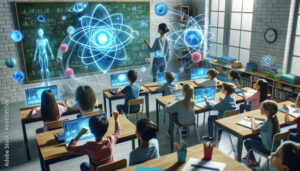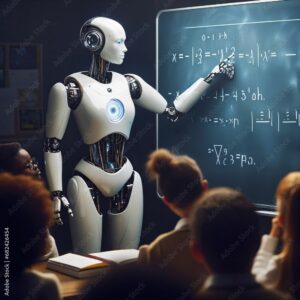Queue the DJ mixer – Remix or original content?
There is nothing new under the sun
Today, education is focusing on introducing AI into the classroom and teaching practices. On the surface, this seems to be a new and cutting edge practice. However, education has always been introducing new technologies to the younger generations. We first started off with the chalkboard, and moved into notebooks and overhead projectors. We shifted from paper to computers, from overhead projectors to screen beams, from telegraphs to telephones, information processing to digital integration in class material. Nothing in education is new. It is all a remix of their predecessors.

If education is the introduction of “new” technology, why has collaboration been avoided until recently? Why has it been a “fend for yourself” attitude towards those who are new in the profession? Or, on the other hand, have we remixed this attitude and created a new and updated version on this problem?
I would argue that we have moved from guarded material, to monetarily guarded material with the introduction on Teachers Pay Teachers. Only those who have the means can access this level of collaboration. Even in their “About us” section, they reference the idea of “sharing” ideas with the global community of teachers. Yet, they also indicate that this is a marketplace for ideas and creativity. Their idea of sharing has become synonymous with capitalism. How lucrative is TpT? Annually, TpT grosses an estimated 845.1 million dollars. Statistically, 2 out of 3 teachers will purchase and use resources from TpT in their classroom. This platform has become the standard of educational resources with over 1 billion resources being downloaded and used by an estimated 5 million users. Does this speak to its genius, or to the new “fend for yourself” environment we have created for teachers? I think it is a little of both. Not only this, but for a while there was a stigma towards those who did purchase resources off of this site. It was believed these teachers were “lazy” or “unoriginal”, or the material purchased is mediocre and fails to address curricular standards.
If we look at the future, and look towards the possibilities with AI, it, again, shows a guarded style of collaboration. This is not only monetarily, but also technological savvy and accessibility. While there are AI platforms that are free (at the moment), the AI platforms that allow students to use these tools critically, are profit based programs. These programs include SchoolAI, Diffit, etc. Licensing these platforms for educational use in a school division is expensive, and out of reach for individual teachers to afford. Furthermore, not every school has the same access to computers or high speed internet access. Rural school divisions have different needs with regards to technology than urban school divisions. Again, we have not moved passed the stigma of “copying” in education, but merely shifted the stigma. Today, there are educators who scoff at those educators who use AI for their professional practices. Popular opinions include inaccurate information, lack of critical literacy (on the teacher’s and students’ part), and enabling society to view teaching as replaceable with AI. Whether their opinions hold any validity is irrelevant to them. As we are all aware, AI is in no way replacing teachers. This is one of the biggest myths regarding education and AI. While it will impact many aspects of the profession, it can -in no way- replace the human connection and relationship building aspect that teachers provide students.

Education is the epitome being a remix. Ideas are copied, tweaked and remastered all the time. Even our fears regarding new technologies being introduced to our student population is an echo of the last generations concerns. I remember my math teacher giving the good ole “you will not have a calculator in your pocket everyday when you are an adult” speech every time we asked to use a calculator. The same sentiments are being voiced with regards to AI. Who knows what the future will bring and what the world will look like in 20 years. It is best to prepare our students with all the tools possible to succeed in that world.